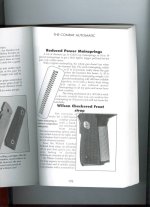There are no more "bugs" in the 1911 design than with any other weapon system, including the allegedly "perfect" Glock. The problems discussed here are the result of quality assurance issues. Yes, they SHOULD be able to get it right from the factory, but this isn't 1927 anymore. Back then the guns were all made of tool steel, and assembled by legions of skilled workers trained to do a single task well. Nowadays however that amount of hand labor is too expensive to even consider. The reason why Glocks are so cheap, yet usually work well is because the design relies on parts made from simple stampings and moldings, where anybody that knows how to flip a switch can operate the machine to make the part. 1911s have been economized to allow a greater number of parts to be made from simple castings, but there is still a need to hand-fit a lot of those parts. Once properly assembled a 1911 is a super shooting machine, but I am also not surprised on a new one if a part or two didn't get fitted properly such as the extractor. The need for competent hand fitting of many of its parts is the primary weak link in the 1911 design, at least as it relates to modern firearms. But I certainly won't abandon it just because of that, because its virtues far outweigh its vices.
Thus my reason for telling rock_jock to just get those parts tuned up. One or two small snags shouldn't keep him from enjoying his new gun. BTW I wouldn't send a gun of mine back to the factory (warranty or no), as in all likelihood the same half-trained personnel would try to "fix" it.


